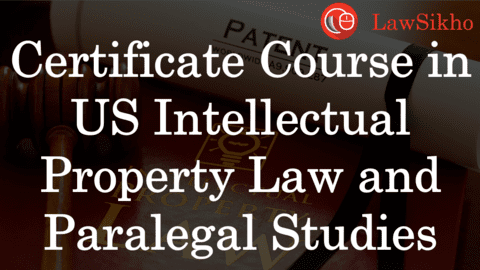This article has been written by Ben Saju Zacaria pursuing the Diploma in US Intellectual Property Law and Paralegal Studies from LawSikho. This article has been edited by Aatima Bhatia (Associate, Lawsikho) and Ruchika Mohapatra (Associate, Lawsikho).
Table of Contents
Introduction
The legal rights or the protection available for the works, invention, literal or artistic creations of an individual are collectively known as Intellectual Property Rights. They can be divided into two categories.
(i) Copyright and related rights
(ii) Industrial Property
(i) Copyright and related rights: These are the legal rights and protection available for creators of artistic and literary works. These rights may include musical works or and even computer codes. These rights help in monetization and preventing unauthorized use. .
(ii) Industrial Property: These rights can be classified into two categories:
- Trademarks and Geographical Indications: These are the items that are attributed either to their origin or quality.
- Patents, Industrial and Trade Secrets: These are legal rights and protection given to innovations, design and creation of technologies. These rights prevent unauthorized usages
Except for trade secrets, all other rights are given for a finite period. Standards are technical requirements or specifications that seek to provide a common design for a product or process. Patents which are essential to a standard and have been adopted by a Standard Setting Organization (SSO) are known as SEPs. This article deals with issues faced by SSOs in licensing SEPs.
Standard Setting Organisations
Standard-Setting Organizations are also called Standard-development organizations (SDOs). Standard-Setting Organizations can either be private, quasi-governmental or government bodies that are primarily engaged in works such as coordinating, developing, revising, reissuing, promulgating, amending and maintaining the industry standards that are widely adopted by a group for the products and services. The main function of the Standard-setting Organizations is that they set up technical and performance standards in the respective industry thus promoting the widespread industrial use, lowering the development cost of the products and consequently increasing competition. However, it can also result in fostering Anti-competitive agreements and patent holdup. Standard-Setting organizations can be divided based on their role, extent of applicability ( national and international ) and position.
The most important and well established Standard-setting organizations are the International Organization for Standardization, the International Electrotechnical Commission, and the International Telecommunication Union (ITU). The Bureau of Indian Standards is India’s National Standard-Setting Organization. Standards can be divided into two categories:
(i) De-Facto: These refer to the standards formed as a result of the use of certain technology widely by the market players and which are accepted by the market thus securing the dominant market share without being recognized by any Standard-Setting Organizations. For Example, the QWERTY layout in the keyboards.
(ii)De-jure: These are the standards approved and adopted by the Standard-Setting Organizations. It is the duty of the SSOs to implement the standards in the mark. For example; Internet Engineering Task Force has adopted the Transmission Control Protocol/Internet Protocol (TCP/IP) as a Standard for communications on the Internet.
Standard-Essential Patents ( SEP )
Standard-essential Patents are the patents that are compulsory requirements for setting the standardized technology adopted by the respective Standard-Setting Organizations. Therefore Standard-Essential Patents are the standard to be followed by the technologies in their field which are protected under the Patent Regime. In Microsoft Corp. v. Motorola Mobility, Inc. The US court defined SEP as “A given patent is ‘essential’ to a standard if the use of the standard requires infringement of the patent, even if acceptable alternatives of that patent could have been written into the standard“.
This patented technology can be a small portion of a product, thus it would be impossible to manufacture standard followed products without the SEPs. Standard Organizations require its members to disclose their patents and pending applications which could be part of the standard adopted and grant licenses for the Standard-Essential Patents.
Frand
FRAND is the short form of fair, reasonable and non-discriminatory. The SEP owners are obliged to license the rights to others based on the FRAND terms in return for the royalty. FRAND agreements are implemented with an aim to prevent license abusing and monopolistic attitudes. Once an Organization is providing FRAND license they shall provide it even to the non-members.FRAND is a policy added into the bylaws of the Standard-Setting Organization Agreement. It is widely accepted that there are no globally accepted tests for determining whether a license agreement is following FRAND or not.
Major issues with standard-essential patents
(i) Patent Holdup:
Once a patent is accepted by Standard-Setting Organizations, it becomes unavoidable. In order to meet the standards other manufacturers are forced to use that technology. Otherwise, their product would not be marketable under the label following specific standards. This unavoidable situation strengthens the bargaining power because there is no alternative for the technology. Patent holdup happens when the holders of SEP are trying to impose heavily unreasonable and unacceptable royalty rates. Therefore to prevent a monopolistic market the SSOs constrain patent holders with FRAND licenses. However, the vague nature of the agreements continues to affect licenses.
The Competition Commission of India in the case of Micromax v Ericsson noted that “hold-up can subvert the competitive process of choosing among technologies and undermine the integrity of standard-setting activities. Ultimately, the high costs of such patents get transferred to the final consumers.”
(ii) Royalty base:
The reasonableness of the royalty amount can be assessed only on the basis of the correct selection of perfect principles for calculating royalty. Normally, SEP holders prefer calculating royalty based on the net sale price of the final product rather than the value of the patented Part. Thus the licenses are forced to pay a royalty for the components that are not within the scope of royalty. This formula for calculating royalty is causing adverse effects on licensees
In Virnetx Inc v Cisco The US court of Appeals for the Federal Circuit held that it is better to calculate royalty based on the value of the Patent rather than the whole value of the product.
(iii) Royalty Stacking
Royalty Stacking is a kind of situation in which more than one royalty is added together leading to a high aggregate amount of royalty. This kind of situation arises when more than one SEP patented product is used in the same multi-component product, where the aggregate royalty may exceed the total sale price.
(iv) Availability of injunctive relief
To enforce the royalty rates, the SEP owners use the threat of injunction as a powerful weapon. Due to this threat, the licensees, in order to prevent heavy loss from infringement, are forced to accept these unreasonable royalties. But sometimes injunctive reliefs are used against the willing licensees for unreasonable royalty, which is against the FRAND commitment as the FRAND agreement provides sufficient royalty. Such an action will cause a monopolistic power holder and an abusive dominant position, thus violating competition laws. Therefore it is fair to claim injunctive relief only when the licensees are not ready to pay the royalty accepted through the FRAND agreement.
The basic principle for granting an injunction is that the applicant must suffer irreparable loss in the absence of an injunction. In India, injunction is based on principles of equity. The consideration for the SEP holder is royalty, and the only thing which is to be checked is whether the royalty adopted is adequate or not. So even if the accepted royalty is low, an injunction should be granted only if an irreparable injury affected the SEP holder.
Conclusion
The laws regarding SEP are still emerging and are not well established and therefore, judgments vary from place to place. One important thing to remember is that SEPs are used not because of other options, instead, they are used to follow a common standard and ensure uniformity. So, as a developing nation, India possesses a huge IPR Economic Market and we can’t hang behind due to a lack of jurisprudence. For better development, companies must pass their technology based on the reasonable terms and conditions executed through the FRAND agreement. That doesn’t mean the SEP patent holders have to be prejudiced; the Rights of the SEP patent holders are also to be safeguarded. Therefore, an effective mechanism for settling the disputes regarding the Standard-Essential Patents has to be established by hearing both the parties thereby fixing the rate and settling the dispute, where the decision has to be taken within an intention to protect the end customers too.
Students of Lawsikho courses regularly produce writing assignments and work on practical exercises as a part of their coursework and develop themselves in real-life practical skills.
LawSikho has created a telegram group for exchanging legal knowledge, referrals, and various opportunities. You can click on this link and join:https://t.me/joinchat/J_0YrBa4IBSHdpuTfQO_sA
Follow us on Instagram and subscribe to our YouTube channel for more amazing legal content.













